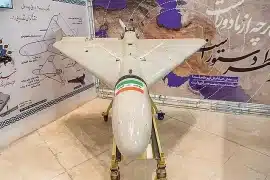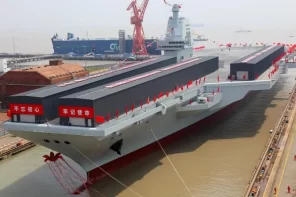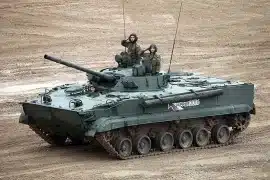With a geopolitical landscape fraught with tensions and surrounded by powerful adversaries, particularly Israel, Iran’s investment in missile defense technology underscores its determination to safeguard its sovereignty and protect against potential threats. Let’s delve into the intricacies of Iran’s missile defense system, exploring its capabilities and advancements.
Evolution of Iran’s Missile Defense System
Iran’s journey in developing its missile defense system can be traced back to the tumultuous events of the Iran-Iraq War (1980-1988). The war exposed Iran’s vulnerability to missile attacks and served as a catalyst for the country to prioritize its defense capabilities. Over the years, Iran has pursued an indigenous approach to develop its missile defense system, leveraging its scientific expertise and strategic alliances with nations like Russia, China, and North Korea. Currently, Iran’s wide array of missile defense systems includes Arman, Azarahksh, Khordad, Bavar 373, and S-300.
Iran’s Missile Defense System Capabilities
Iran’s missile defense system comprises a combination of indigenous and acquired technologies. It has a multi-layered air defense network.
Arman, Iran’s long-range air defense system
On February 17, 2024, Iran displayed their latest long-range air defense system Arman during an unveiling ceremony in Tehran. In English, Arman means aspiration. Iran’s official news agency IRNA revealed that the new anti-ballistic missile system can simultaneously confront six targets at a distance ranging from 120km to 180km.

The Arman system uses Iran’s domestically made Sayyad-3 class missiles. There are two versions of Arman — one with a passive radar, and another with an active radar.
Azarakhsh, the low-altitude air defense system
On February 17, 2024, Iran displayed another air defense system. They named it Azaraksh which means lightning. Azarakhsh is a low-altitude air defense system that can simultaneously use radar and electro-optic systems to detect and intercept targets.
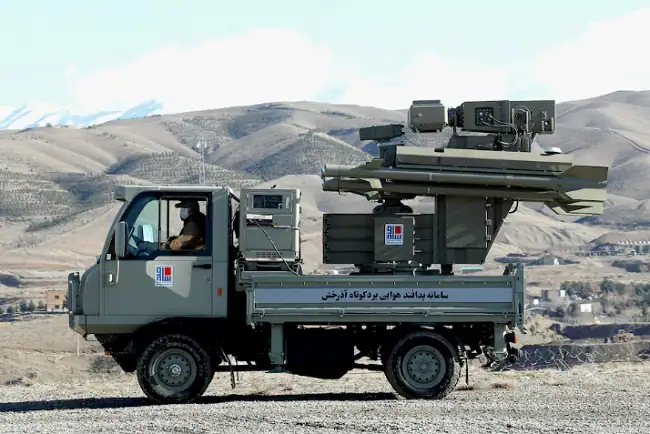
The Azarakhsh air defense system uses missiles that are heat-seekers, meaning that they use infrared-seeking systems. Heat seekers can easily identify objects that emit heat such as human, missle, aircraft and vehicles.
Khordad 15 Air Defense System
The Khordad 15 is a notable addition to Iran’s defense capabilities. Iran Aviation Industries Organization (IAIO) developed this surface-to-air missile (SAM) system. It was unveiled in June 2019 by Iranian Defense Minister Amir Hatami.
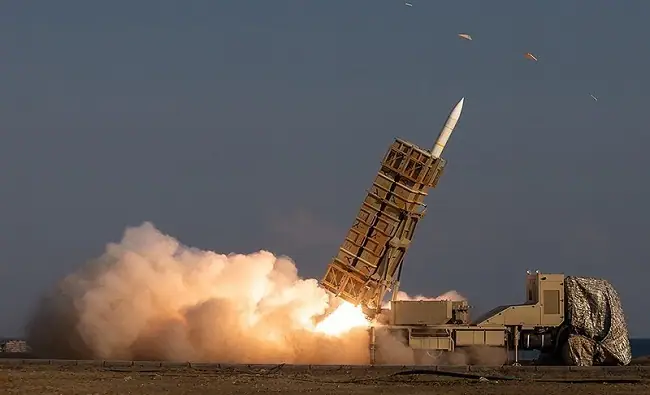
This system can detect and intercept a range of aerial threats, including fighter jets, stealth targets, unmanned combat aerial vehicles (UCAVs), and cruise missiles. Khordad 15 uses Sayyad-3 missiles.
Bavar 373 Missile Defense System
The Bavar-373 represents a significant advancement in Iran’s air defense capabilities. It is a long-range road-mobile surface-to-air missile system. Unveiled in August 2016, its name, Bavar-373, carries a symbolic meaning, translating to “Belief” with “373” representing a numerical equivalent to “O, Messenger of Allah!” in Abjad numerals. Iran officially revealed the system in 2019.

Bavar 373 is a competitor to the formidable S-300 missile system. Iranian Defense Ministry in collaboration with undisclosed local manufacturers and universities manufactured the system. In 2022, Iran unveiled an upgraded version of the Bavar-373 which is described as a competitor to the formidable S-400 system. This new system boasts the capability to intercept fifth-generation fighter aircraft.
S-300 Missile Defense System
The S-300 missile defense system stands as a formidable asset in Iran’s military arsenal. The system is famous for its long-range capabilities and effectiveness in tracking and intercepting airborne threats. It can detect objects up to 300 kilometers away, including ballistic missiles.

The S-300 missile defense system has four key components – surveillance radar for tracking, command vehicle for target identification and launch orders, engagement radar for missile guidance, and six launch vehicles capable of firing two missiles each. This setup allows the system to target up to six threats with a volley of 12 missiles, ensuring a robust defense against potential airborne threats.
Russia completed the delivery of S-300 systems to Iran in November 2016 which marked a significant milestone in the country’s defense capabilities. The two countries signed a $800 million deal in this regard in 2007. The delivery faced significant opposition from Western countries and Israel. The deployment of the S-300 system represents a pivotal step in bolstering Iran’s defense posture and enhancing its deterrence capabilities in the region.
Future Prospects
Iran has been in discussion with Russia to get the latter’s coveted S-400 missile defense system. It remains unclear whether Moscow has agreed to supply S-400 batteries to Iran, reported The Washington Post. The S-400 is highly esteemed in Western military circles for its capability to detect and neutralize aerial threats, including stealth fighter jets like the F-35. Both the United States and Israeli Air Forces operate the F-35 aircraft.
Conclusion
Iran’s missile defense system occupies a central role in the nation’s security calculus, reflecting its determination to defend against external threats and assert its regional influence. As regional dynamics continue to evolve, the evolution of Iran’s missile defense system will remain a critical factor in shaping Middle Eastern security.
FAQ
Does Iran have a S-300 missile defense system?
Ans: Russia completed the delivery of the S-300 missile defense system in 2016. The two countries signed a $800 million deal in 2007 in this regard.

